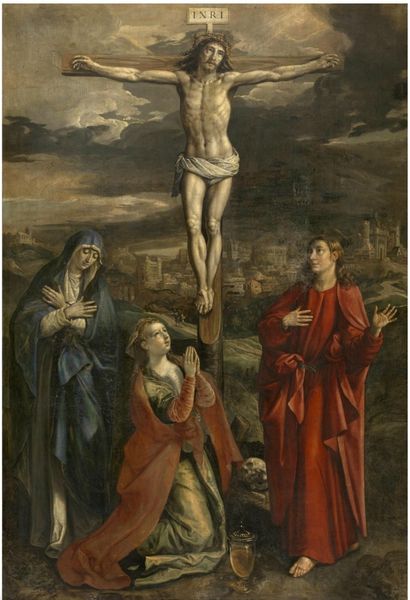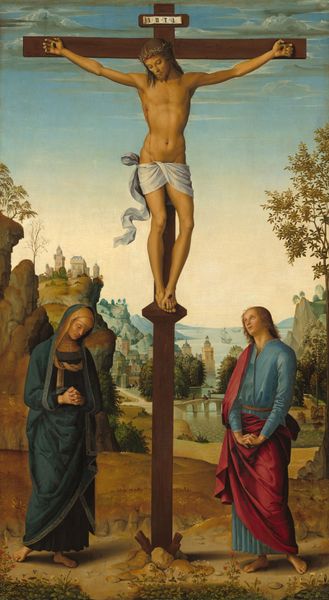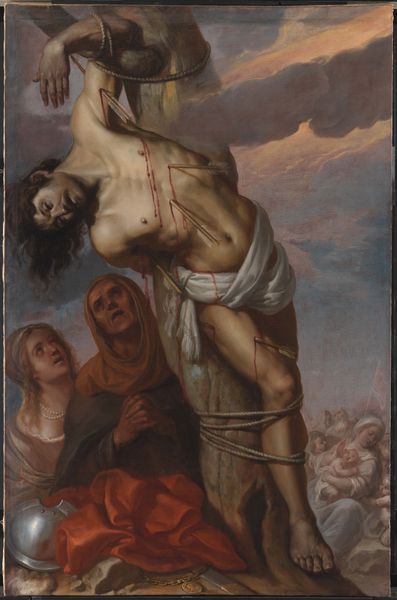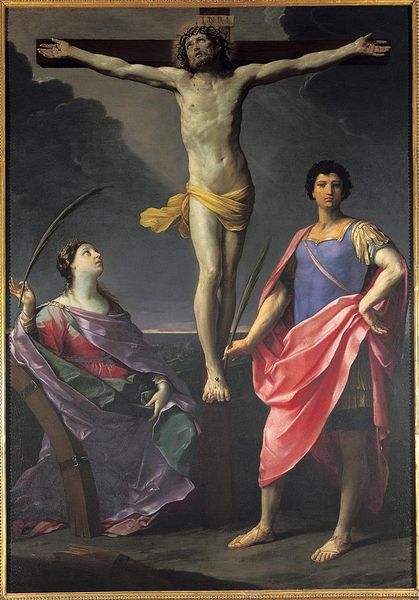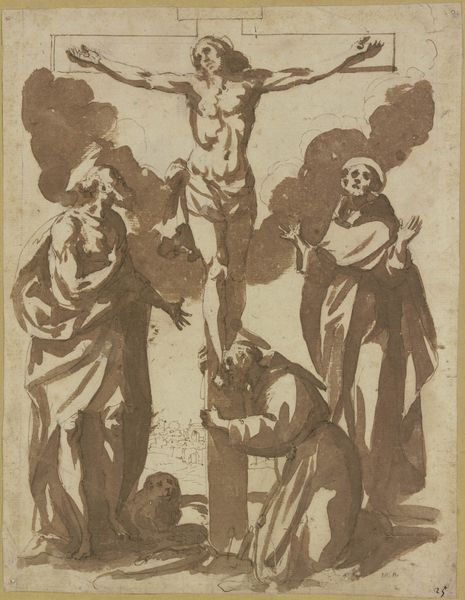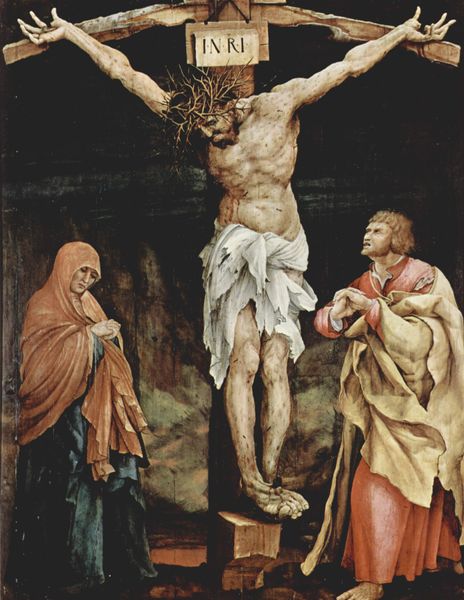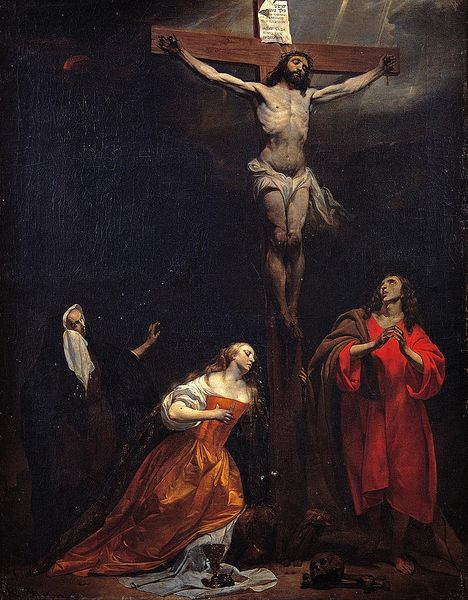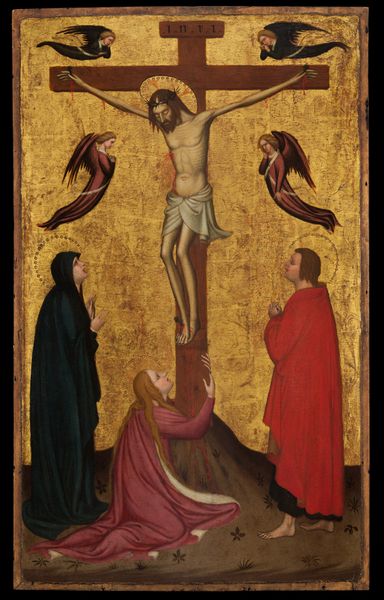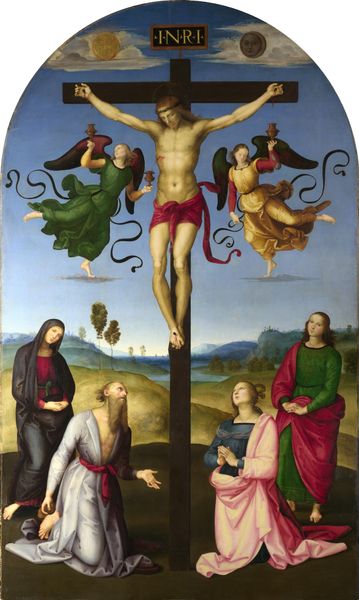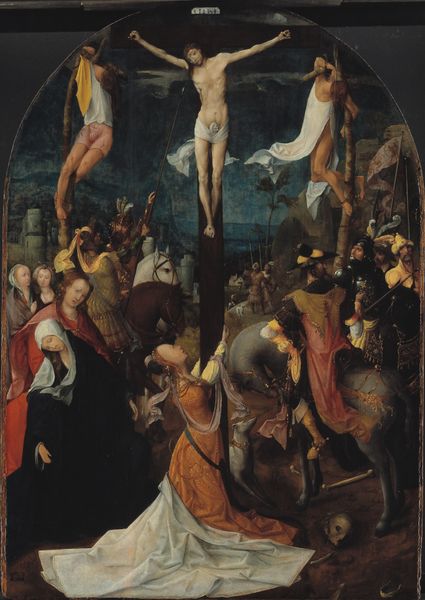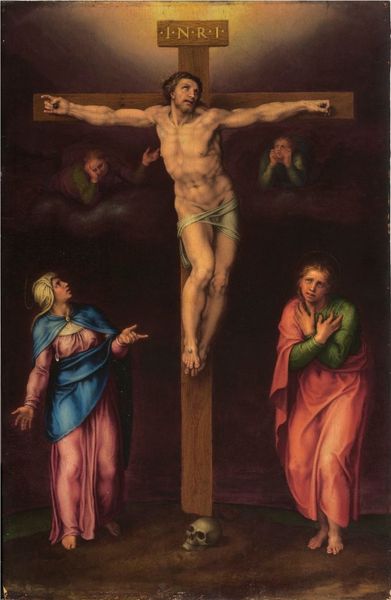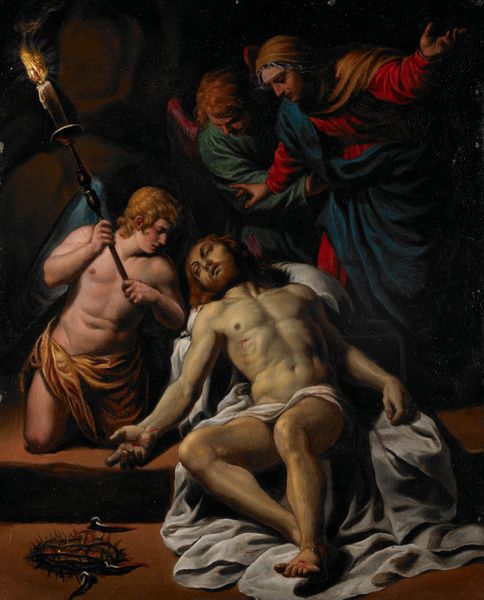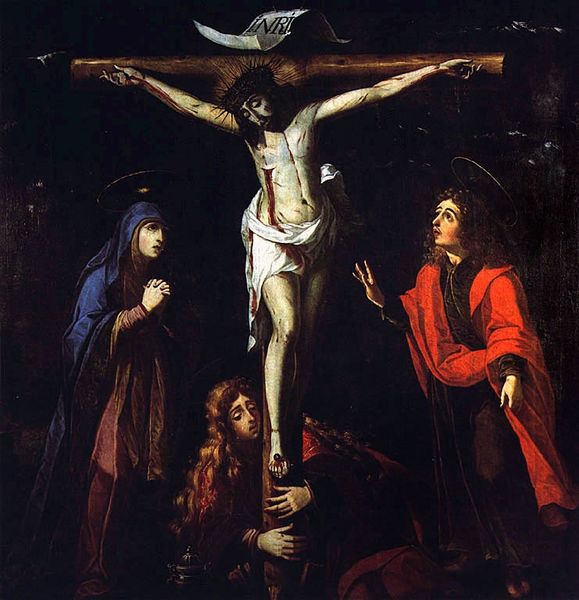
The Crucifixion with the Virgin and Saint John 1624 - 1625
0:00
0:00
painting, oil-paint
#
narrative-art
#
baroque
#
painting
#
oil-paint
#
figuration
#
crucifixion
#
history-painting
#
virgin-mary
#
christ
Dimensions: 61 in. × 40 1/4 in. (154.9 × 102.2 cm)
Copyright: Public Domain
Curator: Here we have Hendrick ter Brugghen's “The Crucifixion with the Virgin and Saint John," completed around 1625. It resides here at the Met. Editor: It's brutally direct. The somber palette and stark lighting emphasize the rawness of the scene. The immediate feeling is one of profound loss. Curator: Absolutely. Ter Brugghen, though Dutch, was deeply influenced by Caravaggio’s tenebrism, giving it this almost theatrical intensity. But it also reflects a broader politicization of religious imagery, where artists began stripping away idealization to confront audiences with the material realities of suffering. Editor: The placement of the skull and bones at the foot of the cross. Classic *memento mori*. It speaks to the transient nature of earthly life and the ultimate triumph of death over even the most righteous figures. The composition suggests how Christian culture is inextricably tied to the confrontation with death and its symbolism. Curator: And the positioning of Mary and John – Mary’s grief, shrouded and internal, contrasted with John's upward gaze towards Christ…it’s not merely sorrow; it's about faith persisting amidst devastation, a key theme within Counter-Reformation art. How does this portrayal of these well-known biblical figures contribute to its overarching narrative about the role of gender? Editor: I'm drawn to how each figure carries very clear associations in Baroque religious symbolism. Red, for example, as displayed on St. John’s cloak speaks to the blood of martyrdom. He looks upward toward heaven for respite and guidance, while Mary’s robes remind me that purple historically symbolizes grief. Curator: I think considering the historical backdrop, one must interpret the representation of the body of Christ in conversation with the power dynamics of religious institutions. Editor: What strikes me most is that juxtaposition of the divine and the mundane. A single candle piercing the darkness. Brugghen captures it all in a visual language of profound spiritual significance. Curator: Seeing "The Crucifixion with the Virgin and Saint John" always renews my appreciation for art's ability to address not just faith, but also systems of power, gender, and representation. Editor: Agreed, it’s one of those works where looking closer into the symbols always generates more meaningful interpretations of the bigger picture.
Comments
No comments
Be the first to comment and join the conversation on the ultimate creative platform.
